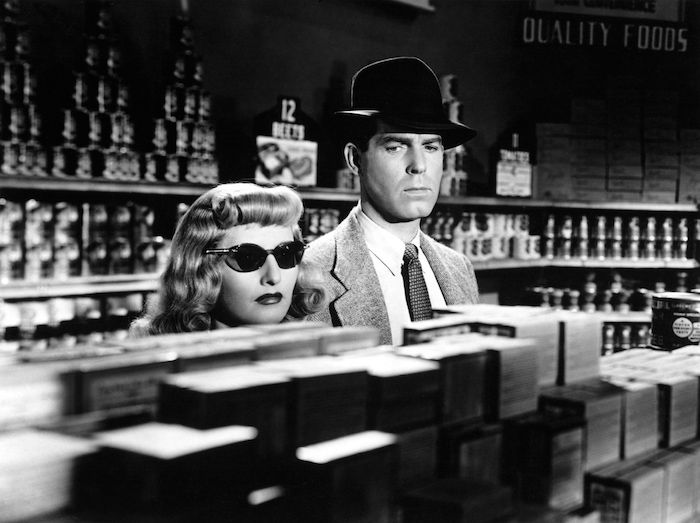
It’s no secret I’m a fan of “old” movies and by old I generally mean movies made before the 1970s. Old movies are where my vintage style fascination began as a child and it’s still where I go to when referencing more historically accurate vintage looks—an actress might not have dressed like the everyday woman in the 1920s but you’re going to get a better picture of what flappers looked like watching Clara Bow than you are seeing the latest incarnation of The Great Gatsby. Modern films are great, but I'm still more of a sucker for vintage ones. Lately November has been dubbed “Noirvember” by some and the grey month is enjoyed watching great film noir. So whether you’re new to noir or already a devoted fan, here are five classic films to enjoy now or anytime you’re in the mood for something a little sinister.
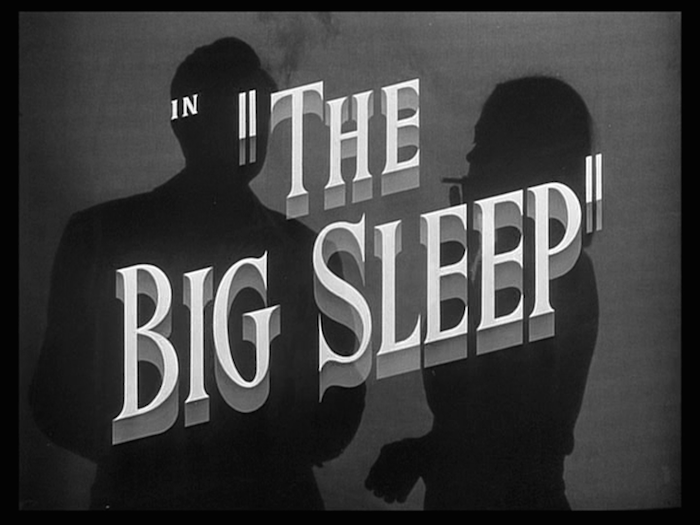
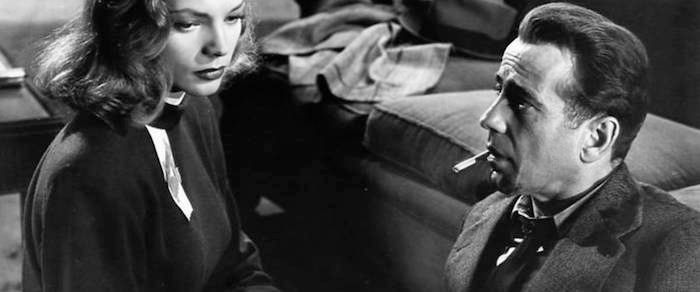 The Big Sleep (1946): In the Big Sleep we follow a private dectives investigation into a wealthy family's dealings and get caught up in their complicated world of blackmail, murder, and double-crossing. The plot is so complicated legend has it that even the director and screenwriters were confused as to "who done it," but a lot of the film's success has to do with the chemistry of the leads--Bogart and Bacall. While it might not have as many memorable lines as another famous film they starred in together (To Have and To Have Not) it still has incredibly witty repartee and distinct, dramatic visual style.
The Big Sleep (1946): In the Big Sleep we follow a private dectives investigation into a wealthy family's dealings and get caught up in their complicated world of blackmail, murder, and double-crossing. The plot is so complicated legend has it that even the director and screenwriters were confused as to "who done it," but a lot of the film's success has to do with the chemistry of the leads--Bogart and Bacall. While it might not have as many memorable lines as another famous film they starred in together (To Have and To Have Not) it still has incredibly witty repartee and distinct, dramatic visual style.
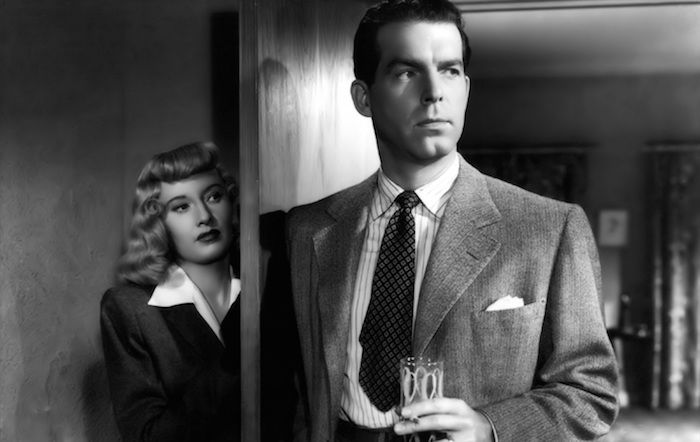 Double Indemnity (1944): This has to be one of the most enduring movies of the film noir genre and if you only choose to watch one of these films I suggest you make it this one as being a perfect example of the entire genre. The film is from the perspective of Walter Neff, an insurance salesman who returns to his office late one night and begins to dictate his confession into a Dictaphone (recording device); the story thus begins being told through his eyes in flashback. Neff meets provocative blonde housewife Phyllis Dietrichson on a routine visit and quickly falls for her and gets caught up in her plot to murder her husband.
Double Indemnity (1944): This has to be one of the most enduring movies of the film noir genre and if you only choose to watch one of these films I suggest you make it this one as being a perfect example of the entire genre. The film is from the perspective of Walter Neff, an insurance salesman who returns to his office late one night and begins to dictate his confession into a Dictaphone (recording device); the story thus begins being told through his eyes in flashback. Neff meets provocative blonde housewife Phyllis Dietrichson on a routine visit and quickly falls for her and gets caught up in her plot to murder her husband.
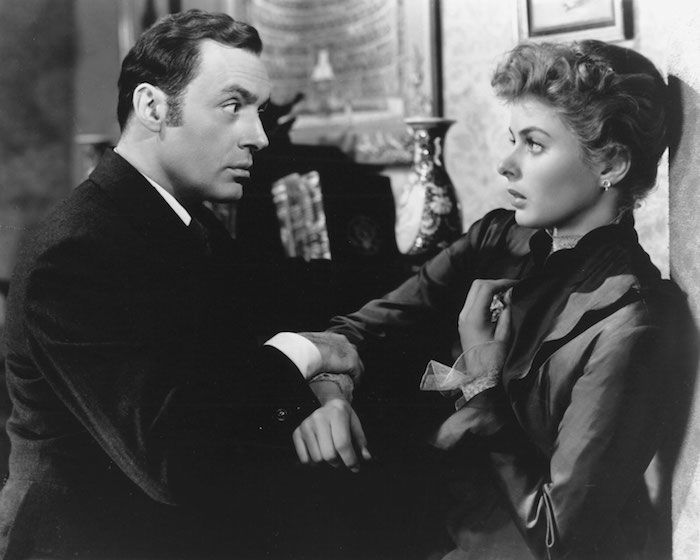 Gaslight (1944): The film pushes the envelope of what it means to be a film noir because unlike most films of the genre it’s also a period piece sent in the Edwardian age. But it’s still visually shot like a film noir and contains the familiar and creepy narrative structure. This film is about Paula who after witnessing her aunt’s murder as a child is sent to Italy and trained as an opera singer. She returns to her hometown of London as an adult with her husband Gregory. Gregory quickly starts acting peculiar; locking all of Paula’s aunts things in the attic and Paula starts to feel she is losing her mind as she starts losing things, hearing noises, and seeing gaslights dim and brighten for no apparent reason. The term gaslighting--which is a form of mental abuse in which the abuser twists information to make the victim doubt their own perception or sanity--actually comes from this thriller.
Gaslight (1944): The film pushes the envelope of what it means to be a film noir because unlike most films of the genre it’s also a period piece sent in the Edwardian age. But it’s still visually shot like a film noir and contains the familiar and creepy narrative structure. This film is about Paula who after witnessing her aunt’s murder as a child is sent to Italy and trained as an opera singer. She returns to her hometown of London as an adult with her husband Gregory. Gregory quickly starts acting peculiar; locking all of Paula’s aunts things in the attic and Paula starts to feel she is losing her mind as she starts losing things, hearing noises, and seeing gaslights dim and brighten for no apparent reason. The term gaslighting--which is a form of mental abuse in which the abuser twists information to make the victim doubt their own perception or sanity--actually comes from this thriller.
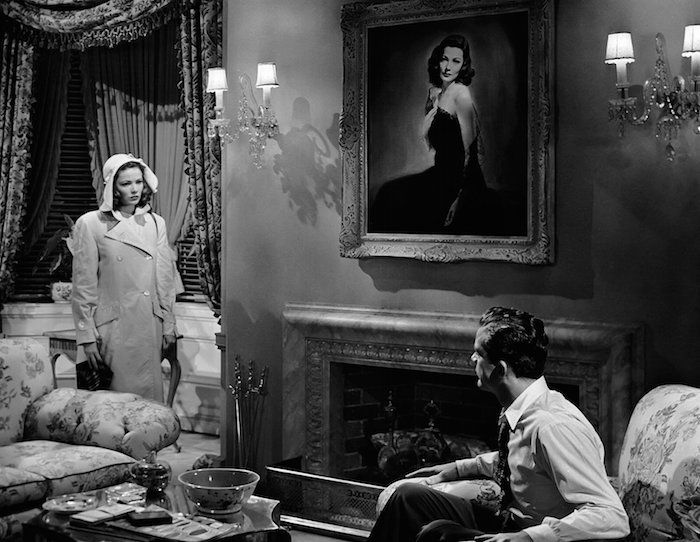 Laura (1944): This is one of my favorite films. It opens with a detective trying to solve the murder of Laura; he goes through her apartment and friends, he starts to feel drawn to her portrait above the mantel. The catch is, Laura isn’t dead. It’s a case of mistaken identity and everything starts to get very strange when she comes home from a quiet weekend away. So who was the dead girl in her apartment wearing her clothes? Did the murderer also make a mistake and is Laura still in danger?
Laura (1944): This is one of my favorite films. It opens with a detective trying to solve the murder of Laura; he goes through her apartment and friends, he starts to feel drawn to her portrait above the mantel. The catch is, Laura isn’t dead. It’s a case of mistaken identity and everything starts to get very strange when she comes home from a quiet weekend away. So who was the dead girl in her apartment wearing her clothes? Did the murderer also make a mistake and is Laura still in danger?
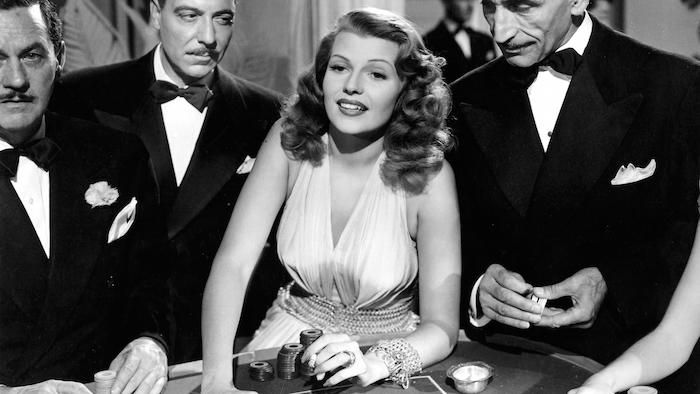 Gilda (1946): One of the big draws of film noirs are the femme fatales; wonderfully rich, often a little dark female characters who are notably absent from other film genres. In Gilda you have one of the most captivating female character (Gilda) played by the dynamic Rita Hayworth in a performance you can't look away from. In this film a gambler named Johnny starts working for a crooked casino owner and it quickly becomes clear that the casino owner's wife (Gilda) and Johnny have some history. Gilda goes from one unhappy relationship to another but unravels in such a glorious way with bold lines like, "I hate you so much I would destroy myself if I could take you down with me" that you can't help but admire her.
Gilda (1946): One of the big draws of film noirs are the femme fatales; wonderfully rich, often a little dark female characters who are notably absent from other film genres. In Gilda you have one of the most captivating female character (Gilda) played by the dynamic Rita Hayworth in a performance you can't look away from. In this film a gambler named Johnny starts working for a crooked casino owner and it quickly becomes clear that the casino owner's wife (Gilda) and Johnny have some history. Gilda goes from one unhappy relationship to another but unravels in such a glorious way with bold lines like, "I hate you so much I would destroy myself if I could take you down with me" that you can't help but admire her.

 The Big Sleep (1946): In the Big Sleep we follow a private dectives investigation into a wealthy family's dealings and get caught up in their complicated world of blackmail, murder, and double-crossing. The plot is so complicated legend has it that even the director and screenwriters were confused as to "who done it," but a lot of the film's success has to do with the chemistry of the leads--Bogart and Bacall. While it might not have as many memorable lines as another famous film they starred in together (To Have and To Have Not) it still has incredibly witty repartee and distinct, dramatic visual style.
The Big Sleep (1946): In the Big Sleep we follow a private dectives investigation into a wealthy family's dealings and get caught up in their complicated world of blackmail, murder, and double-crossing. The plot is so complicated legend has it that even the director and screenwriters were confused as to "who done it," but a lot of the film's success has to do with the chemistry of the leads--Bogart and Bacall. While it might not have as many memorable lines as another famous film they starred in together (To Have and To Have Not) it still has incredibly witty repartee and distinct, dramatic visual style. Double Indemnity (1944): This has to be one of the most enduring movies of the film noir genre and if you only choose to watch one of these films I suggest you make it this one as being a perfect example of the entire genre. The film is from the perspective of Walter Neff, an insurance salesman who returns to his office late one night and begins to dictate his confession into a Dictaphone (recording device); the story thus begins being told through his eyes in flashback. Neff meets provocative blonde housewife Phyllis Dietrichson on a routine visit and quickly falls for her and gets caught up in her plot to murder her husband.
Double Indemnity (1944): This has to be one of the most enduring movies of the film noir genre and if you only choose to watch one of these films I suggest you make it this one as being a perfect example of the entire genre. The film is from the perspective of Walter Neff, an insurance salesman who returns to his office late one night and begins to dictate his confession into a Dictaphone (recording device); the story thus begins being told through his eyes in flashback. Neff meets provocative blonde housewife Phyllis Dietrichson on a routine visit and quickly falls for her and gets caught up in her plot to murder her husband. Gaslight (1944): The film pushes the envelope of what it means to be a film noir because unlike most films of the genre it’s also a period piece sent in the Edwardian age. But it’s still visually shot like a film noir and contains the familiar and creepy narrative structure. This film is about Paula who after witnessing her aunt’s murder as a child is sent to Italy and trained as an opera singer. She returns to her hometown of London as an adult with her husband Gregory. Gregory quickly starts acting peculiar; locking all of Paula’s aunts things in the attic and Paula starts to feel she is losing her mind as she starts losing things, hearing noises, and seeing gaslights dim and brighten for no apparent reason. The term gaslighting--which is a form of mental abuse in which the abuser twists information to make the victim doubt their own perception or sanity--actually comes from this thriller.
Gaslight (1944): The film pushes the envelope of what it means to be a film noir because unlike most films of the genre it’s also a period piece sent in the Edwardian age. But it’s still visually shot like a film noir and contains the familiar and creepy narrative structure. This film is about Paula who after witnessing her aunt’s murder as a child is sent to Italy and trained as an opera singer. She returns to her hometown of London as an adult with her husband Gregory. Gregory quickly starts acting peculiar; locking all of Paula’s aunts things in the attic and Paula starts to feel she is losing her mind as she starts losing things, hearing noises, and seeing gaslights dim and brighten for no apparent reason. The term gaslighting--which is a form of mental abuse in which the abuser twists information to make the victim doubt their own perception or sanity--actually comes from this thriller. Laura (1944): This is one of my favorite films. It opens with a detective trying to solve the murder of Laura; he goes through her apartment and friends, he starts to feel drawn to her portrait above the mantel. The catch is, Laura isn’t dead. It’s a case of mistaken identity and everything starts to get very strange when she comes home from a quiet weekend away. So who was the dead girl in her apartment wearing her clothes? Did the murderer also make a mistake and is Laura still in danger?
Laura (1944): This is one of my favorite films. It opens with a detective trying to solve the murder of Laura; he goes through her apartment and friends, he starts to feel drawn to her portrait above the mantel. The catch is, Laura isn’t dead. It’s a case of mistaken identity and everything starts to get very strange when she comes home from a quiet weekend away. So who was the dead girl in her apartment wearing her clothes? Did the murderer also make a mistake and is Laura still in danger? Gilda (1946): One of the big draws of film noirs are the femme fatales; wonderfully rich, often a little dark female characters who are notably absent from other film genres. In Gilda you have one of the most captivating female character (Gilda) played by the dynamic Rita Hayworth in a performance you can't look away from. In this film a gambler named Johnny starts working for a crooked casino owner and it quickly becomes clear that the casino owner's wife (Gilda) and Johnny have some history. Gilda goes from one unhappy relationship to another but unravels in such a glorious way with bold lines like, "I hate you so much I would destroy myself if I could take you down with me" that you can't help but admire her.
Gilda (1946): One of the big draws of film noirs are the femme fatales; wonderfully rich, often a little dark female characters who are notably absent from other film genres. In Gilda you have one of the most captivating female character (Gilda) played by the dynamic Rita Hayworth in a performance you can't look away from. In this film a gambler named Johnny starts working for a crooked casino owner and it quickly becomes clear that the casino owner's wife (Gilda) and Johnny have some history. Gilda goes from one unhappy relationship to another but unravels in such a glorious way with bold lines like, "I hate you so much I would destroy myself if I could take you down with me" that you can't help but admire her.
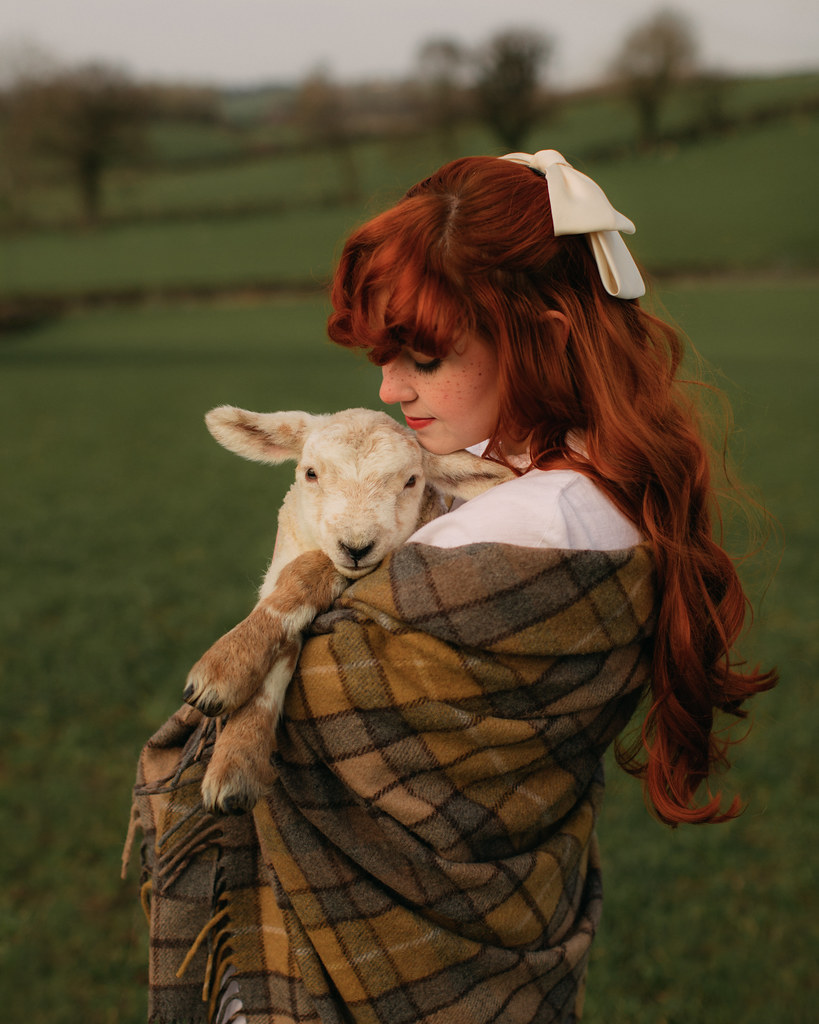


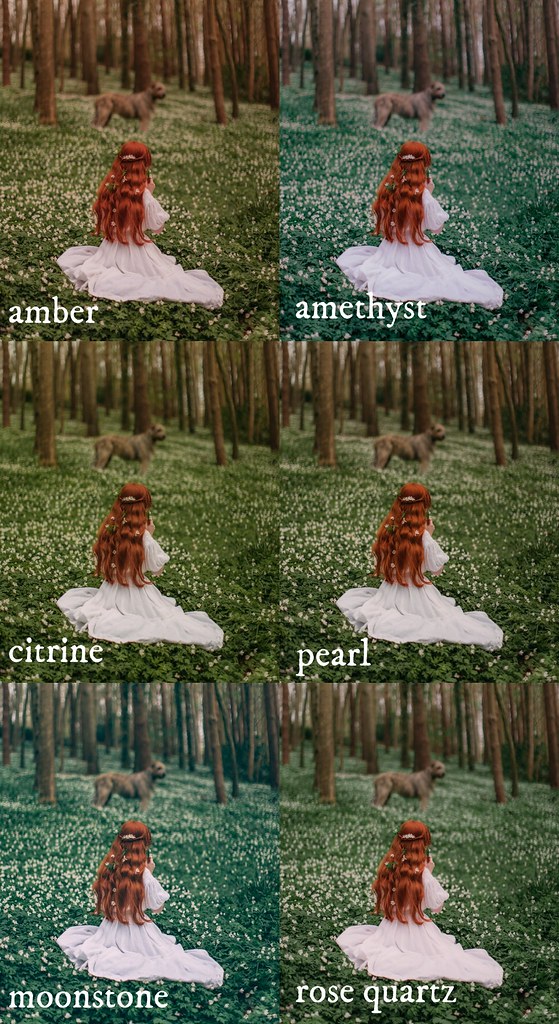
CONVERSATION